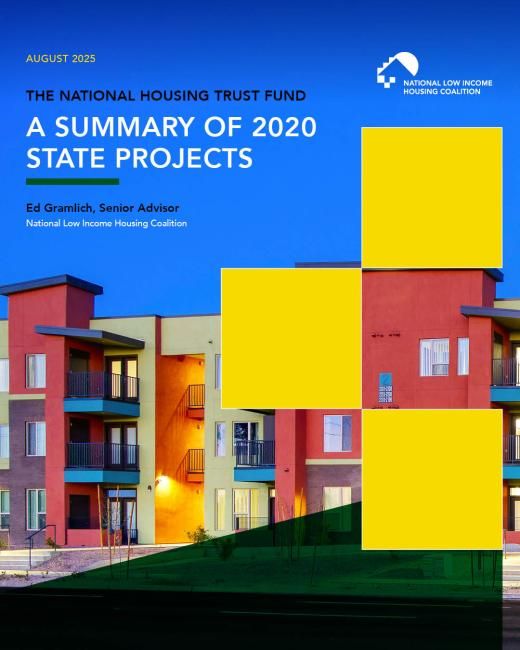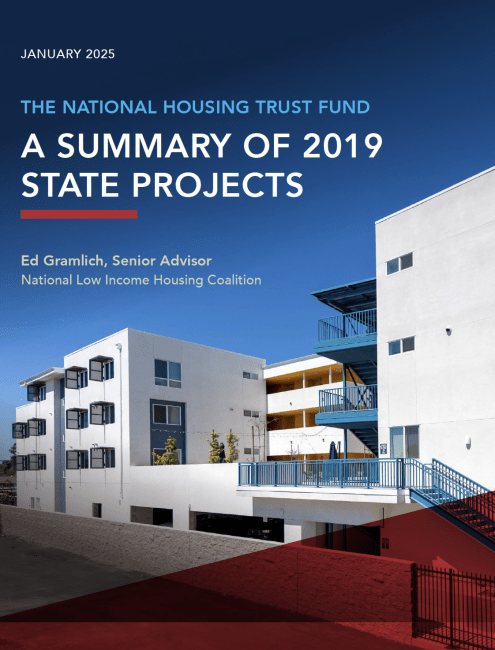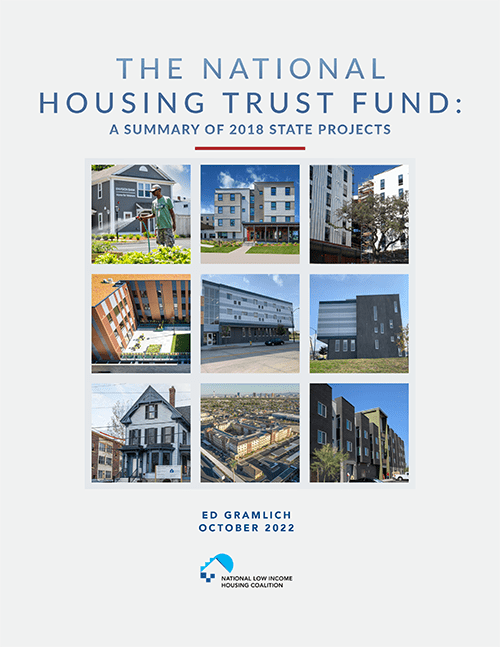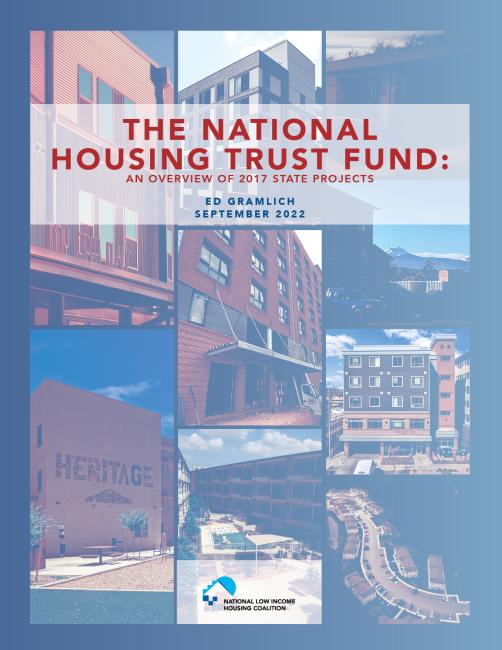The National Housing Trust Fund (HTF) is the first new housing resource since 1974 targeted to the building, rehabilitating, preserving, and operating rental housing for extremely low-income people.
NLIHC, its members, and other stakeholders played a critical role in the creation of the National Housing Trust Fund through the passage of the Housing and Economic Recovery Act of 2008.
In 2016, the first $174 million in HTF dollars were allocated to states. More has been allocated in most years. For 2024, $214 million was made available. Initial allocations are important steps, but far more resources are needed. Learn about annual HTF allocations and find state-specific information here.
NLIHC works with stakeholders to build Congressional support to increase funding for the HTF through tax reform, housing finance reform, investments in infrastructure, and other legislative opportunities.

The National Housing Trust Fund: A Summary of 2020 State Projects report is part of NLIHC’s effort to document the impact of the national Housing Trust Fund (HTF), the report summarizes how each state and the District of Columbia planned to use $323 million allocated in 2020 by the HTF.

Part of NLIHC’s effort to document the impact of the national Housing Trust Fund (HTF), this report summarizes how each state and the District of Columbia planned to use $248 million allocated in 2019 by the HTF.
In 2019 – the fourth year of HTF implementation – states continued to use most of their HTF resources (74%) to target projects that served people experiencing homelessness, people with disabilities, elderly people, or other special needs populations.

In 2018 – the third year of HTF implementation – states continued to use most of their HTF resources to target projects that served people experiencing homelessness, people with disabilities, elderly people, or other special needs populations.

The HTF remains an essential source of gap financing, used in conjunction with the HOME Investment Partnerships Program (HOME), the Federal Home Loan Banks’ Affordable Housing Program (AHP), and other state affordable housing programs, including state or local Housing Trust Funds. The HTF was used as gap financing for 123 projects also using the Low Income Housing Tax Credit (LIHTC) program’s equity investments in 2017, meaning that some units in LIHTC projects would serve extremely low-income households. Still, 58 projects in 24 states did not rely on LIHTC equity; in these cases, state policies tended to use HTF strategically in smaller projects not conducive to the LIHTC process.
Stay Connected
Get the latest information on NHTF Implementation delivered straight to your inbox.

